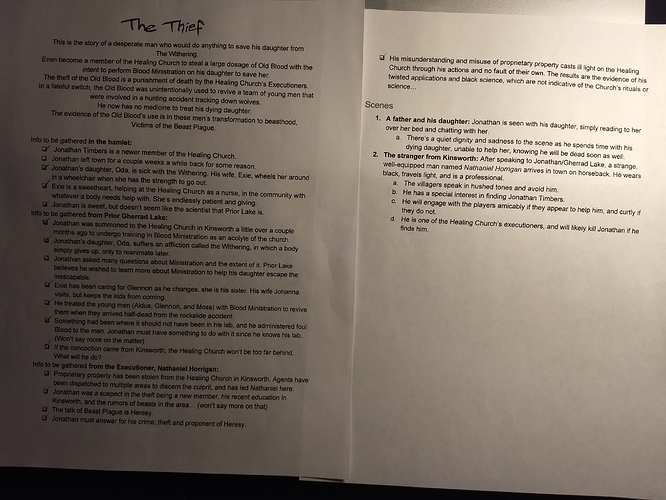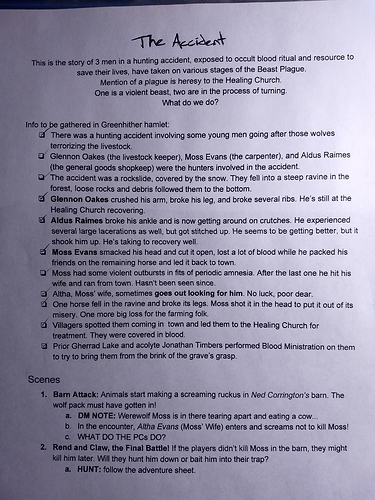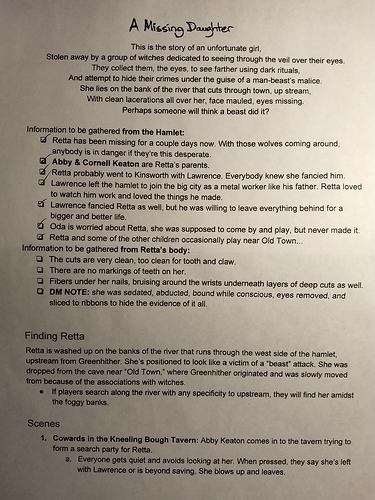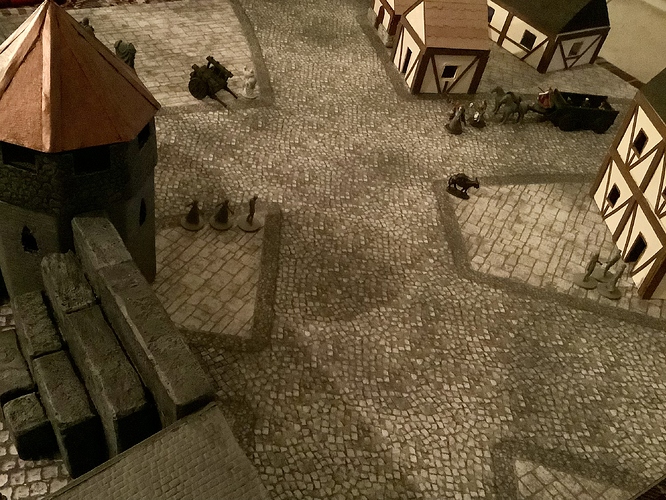Arise, O Necropost! 
Since this useful thread was last active, our sage friend Professor Dungeon Master at Dungeon Craft recorded an excellent and very detailed video (Episode #140) on how to run realistic city adventures that mirror Western European medieval history. Honestly, he provides commentary that supports a standard of verisimilitude that may exceed your goals and mine, but, as always, he gives us some real gems as suggestions:
- Districts/Zones—PDM recommends that, rather than mapping every single , building, street and alley in your city, it make more sense to block your urban setting out by district—zones that are relatively uniform in socioeconomic status and focused on one general urban need or activity (e.g., commerce, government, entertainment, artisans, noble residence). Relate these zones relative to one another in ways that either make logical, practical sense or promote narrative drama.
- Mapping Points of Interest—Then, once your city layout is blocked out by district, decide which important locations—blacksmith, potion shop, armorer, mayor, library, taverns—are located in each district. PDM advances the idea that providing “stationary NPCs tied to one location” is the number one key to making his cities feel real.
- Law Enforcement—PDM suggests you think about how local authorities is big cities are likely to receive and interface with adventuring parties, what they are likely to let adventurers get away with, and what might draw their attention. Cities are not dungeons…
Web DM also posted a pretty thoughtful video on this same subject of building fantasy cities. Jim Davis is really big on factions and how they play out across your map in urban environments. One of his significant tips for running city adventures beyond those presented by PDM is to prep a handy list of properly themed names for urban NPCs, on the idea that your party will simply be encountering and interacting with other characters more often owing to population density, understanding that the flavor that NPC names offer can really sell the themes and realism of the city you are presenting to your players,
At my own table, I find planning and running city adventures are my most challenging game nights, but with some of this advice, the last couple have been memorable and fun. I find the mapping by district is the most useful tip for me, and it provides a great framework for the GM to make the city feel large yet understandable and consistent. A minute or two jotting down the city districts you want to include and their rough relation to one another on the map can support even the most improvisational GM in weaving a very realistic and enjoyable urban environment on the fly. On my group’s last foray to the big city for a library heist, a night’s stakeout and a tense break-in led to an exciting chase through the city with the local constabulary in pursuit. Each board along the chase was designed as the developing story narrative evolved, based on the simple notes on the districts and points of interest I had jotted down before the session, which made navigating and backtracking to familiar areas feel very real for the players during the pursuit.
Other than the mere act of populating a large gaming table with enough urban terrain to “read” as a convincing and immersive city (which is time-consuming but can really wow your players and make for very tactical exploration, chase, and combat encounters), the big challenge I’ve found in bringing urban environments to the tabletop is providing good playable spaces on the board (which is crowded with terrain by dungeon or countryside standards) while maintaining unobstructed sight lines for all players seated at the table. One technique I have found useful is to bias (within the bounds of realism) the buildings toward the GM and the more open encounter areas toward the players, so that the buildings form a “backdrop” for the stage of the board, prioritizing the players’ POV over my own.
I like to make my city buildings multistory, stacked, and modular with playable interiors, separate roofs, and walls that lift off with the floor above; this offers the table a nice vertical dimension to searches and combat encounters, allows me to hide and reveal bad guys in unexpected places, maximize the number of encounter locations for a given building footprint on the battle mat, and recombine components as the PCs travel through the city to keep things looking “fresh.” It also makes it easy for me to remove levels of ancillary buildings when they might otherwise block a players line of sight.
Obviously, cities are also an adventure location where a less-is-more index card approach is a really efficient alternative; making individual cards for each important location grouped by district on the board or using stacks of cards to represent points of interest in a multistory building placed in relation to one another to form a representational “map” of your urban environment are both very valid approaches for putting an entire fantasy city in your pocket and reconstructing it on the gaming table for your group. The Runehammer “power word” approach (presented here) is a good way to define and differentiate the districts within your city and give your players some touchstones to create memorable locations with realistic depth—even if your amazing urban landscape is built from completely index card tokens.
I hope this revived discussion continues to evolve, because I think it’s an interesting and useful topic germane to most of our campaigns.





 Thanks for sharing your suggestions and resources. Y’all are a boon to the role playing community!
Thanks for sharing your suggestions and resources. Y’all are a boon to the role playing community! 
 I love the Crowd mechanic. Very good suggestion!
I love the Crowd mechanic. Very good suggestion!
